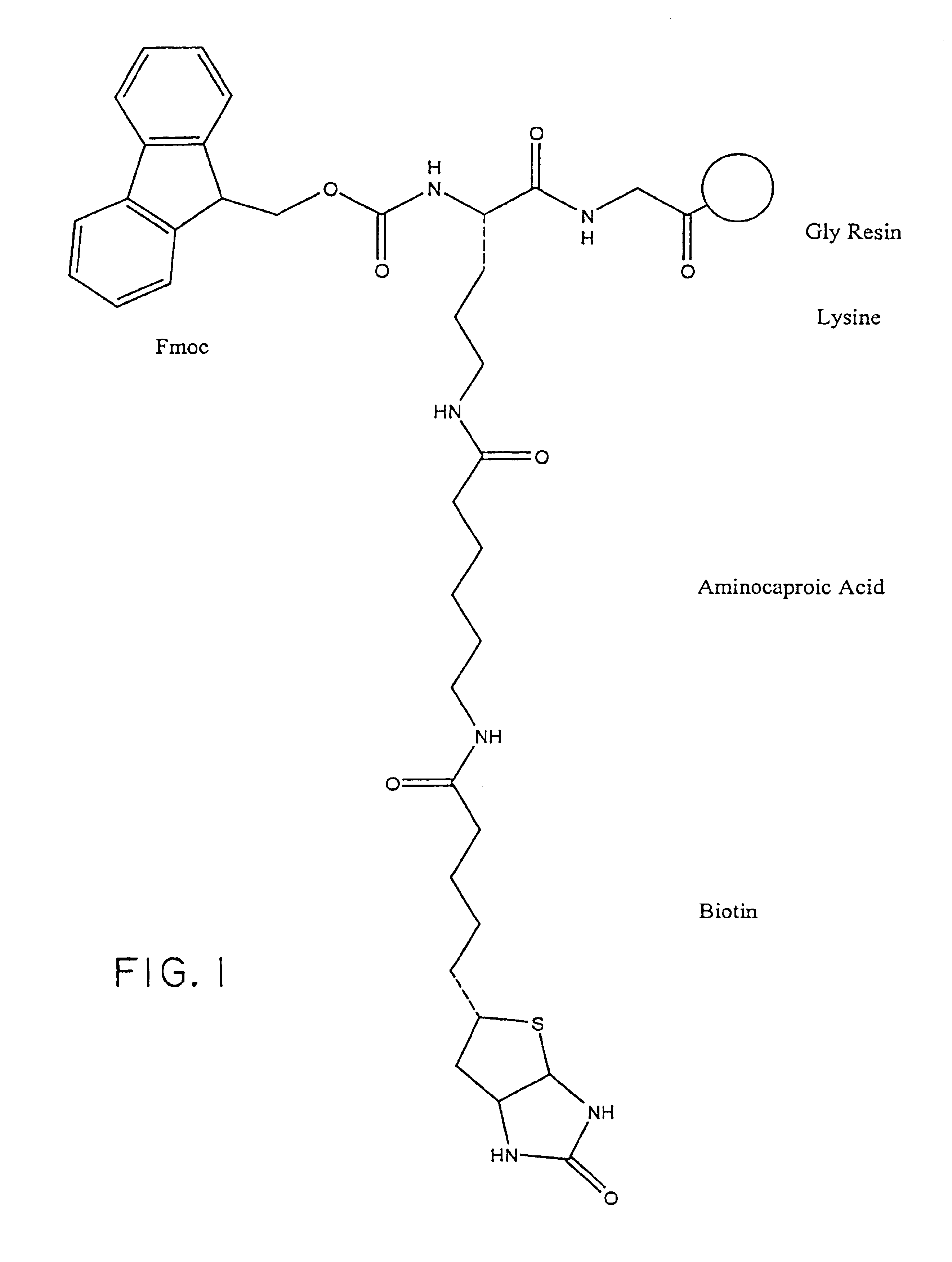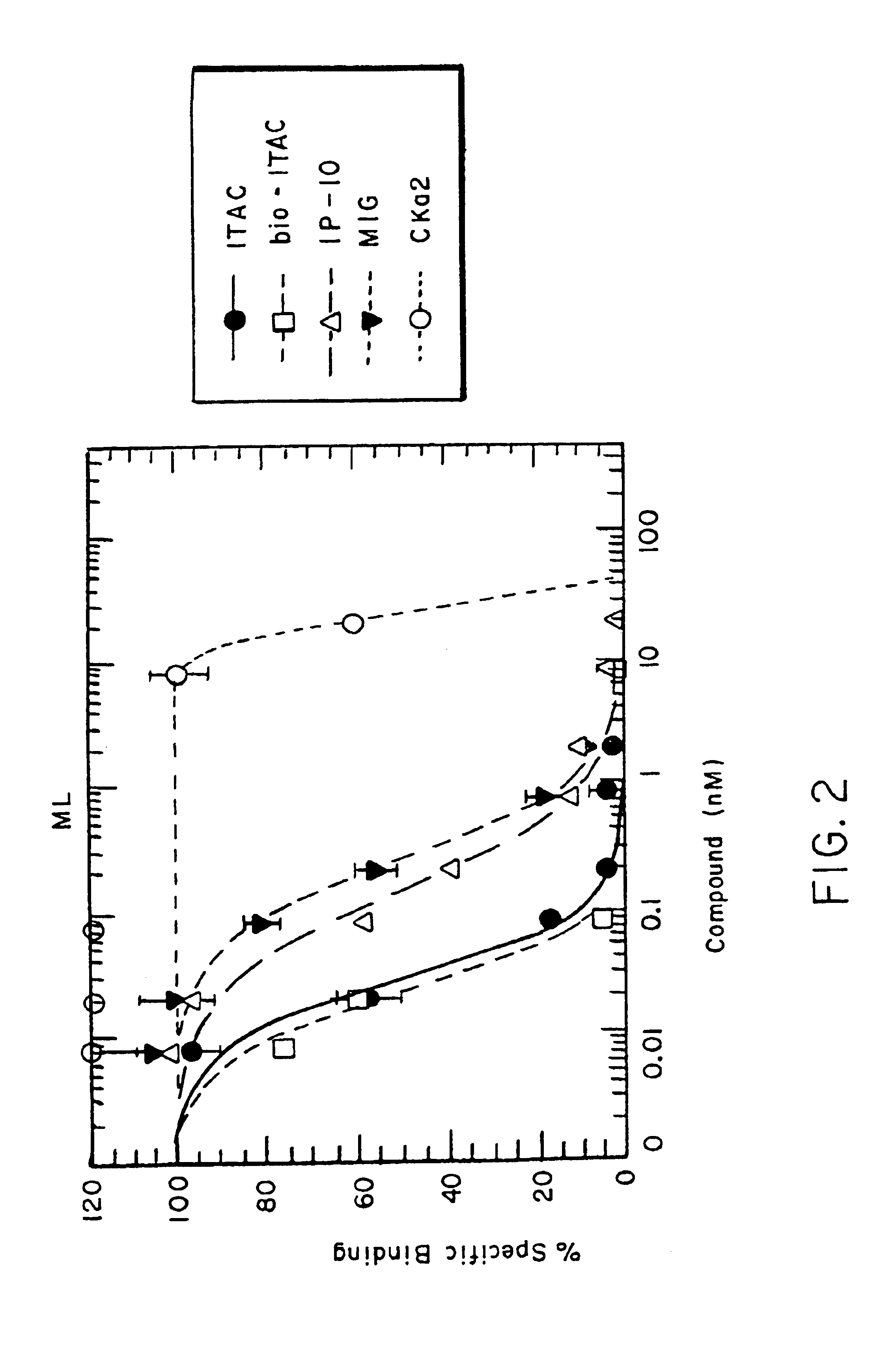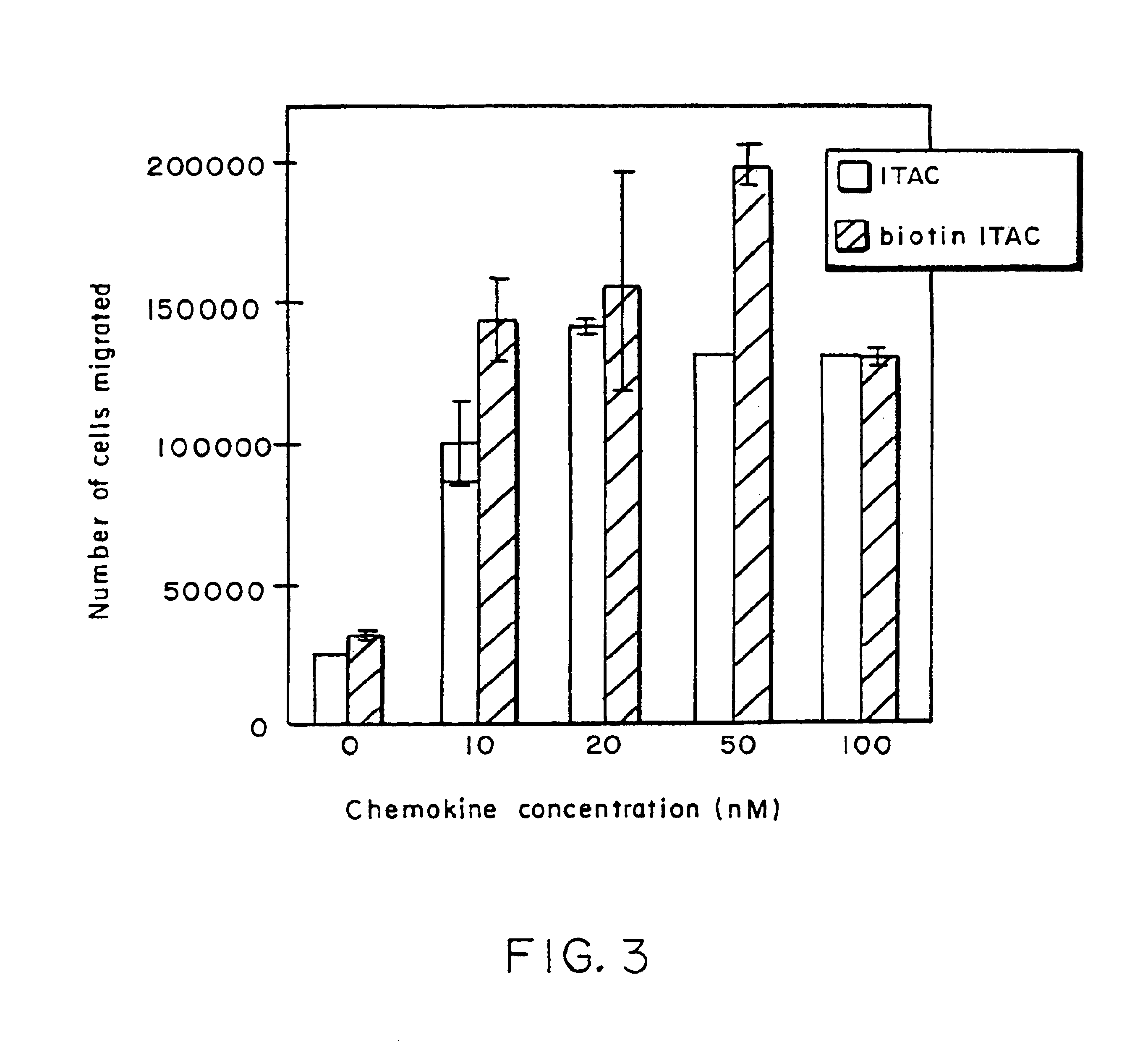Biotinylated-chemokine antibody complexes
- Summary
- Abstract
- Description
- Claims
- Application Information
AI Technical Summary
Benefits of technology
Problems solved by technology
Method used
Image
Examples
example 1
Preparation of a representative Biotinylated Chemokine
[0100]In general, the biotinylated pharmacologically active agents of the invention (“biotin conjugates”) are prepared in accordance with routine procedures known to those of ordinary skill in the art or are commercially available. Commercially-available biotinylated chemokines include: biotinylated human MCP-1, human MIP-1 alpha, and human MIP-1 beta (R&D Systems, Minneapolis, Minn.).
[0101]Specific protocols are provided below as exemplary methods for preparing a representative biotin conjugate; however, it is to be understood that alternative linker molecules and pharmacologically active agents can be substituted for the particular linker molecules and pharmacologically active agents described in the Examples to make a wide variety of biotin conjugates using no more than routine experimentation. In addition, the biotin conjugates embraced within the scope of the invention can be tested in high throughput screening assays, e.g.,...
example 2
Preparation of an Anti-biotin Antibody
[0104]In general, the anti-biotin antibodies of the invention are prepared in accordance with routine procedures known to those of ordinary skill in the art or are commercially available. An exemplary protocol for preparing a monoclonal antibody that selectively binds to biotin with a relatively high affinity (KA˜109M−1) is provided in H. Bagci, et al., FEBS 322(1): 47-50 (1993). See also, F. Kohen, et al., Meth. in Enzymol. 279:451463 (1997); Vincent, P., and Samuel, D., J. Immunol. Meth. 165:177-182 (1993); K. Dakshinamurti, et al., Meth. in Enzymol. 184:111-119 (1990); and Sigma Chemical Co. (St. Louis, Mo., cat. no. #B753, Murine IgG1 α-biotin clone BD-34). In addition, mice transgenic for human Vh and Vl genes are commercially available from Medarex, Annandale, N.J., or from phage display libraries of human Vh and Vl genes, prepared according to the procedure described in M.D. Sheets, et al., PNAS (USA) 95(11): 6157-62 (1998), entitled, “Ef...
example 3
Screening Assay for Binding to a Chemokine Receptor
[0112]A general protocol for a screening assay is presented below (see FIG. 2 for the results of a representative screening assay).
[0113](a) Ligand Binding Assays.
[0114]Competition binding assays were performed with 1251-chemokine as the hot ligand and biotinylated or unbiotinylated chemokine as the cold competitor ligands. The binding reaction was performed with 500,000 receptor cell transfectants and 0.1 nM radiolabeled chemokine in binding buffer (50 mM HEPES12, 5 mM MgC12, 0.5% BSA and 0.05% azide) for 1 hour at room temperature in the presence or absence of cold chemokine in a range of 8 different concentrations from 0.0008-20 M. Non-specific binding is determined by residual binding obtained in the presence of 250 nM cold ligand. Cells are then washed with binding buffer containing 0.5 M NaCl and cell associated radioactivity counted with a top count radioactivity counter. Specific binding was calculated by subtracting non-spe...
PUM
| Property | Measurement | Unit |
|---|---|---|
| Time | aaaaa | aaaaa |
| Time | aaaaa | aaaaa |
| Time | aaaaa | aaaaa |
Abstract
Description
Claims
Application Information
 Login to View More
Login to View More - R&D
- Intellectual Property
- Life Sciences
- Materials
- Tech Scout
- Unparalleled Data Quality
- Higher Quality Content
- 60% Fewer Hallucinations
Browse by: Latest US Patents, China's latest patents, Technical Efficacy Thesaurus, Application Domain, Technology Topic, Popular Technical Reports.
© 2025 PatSnap. All rights reserved.Legal|Privacy policy|Modern Slavery Act Transparency Statement|Sitemap|About US| Contact US: help@patsnap.com



